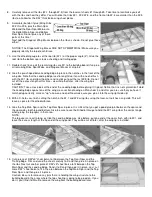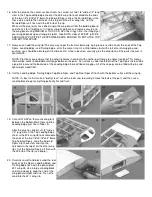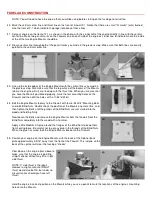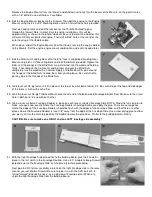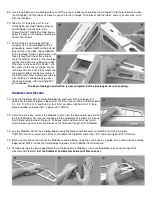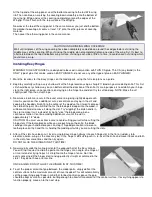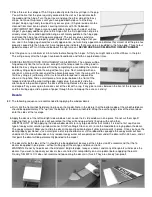
.
Fuel Proofing
Since it’s very difficult to apply iron-on covering material inside the engine
compartment, this area should be fuel proofed by painting it with a fuel-proof
hobby paint, before the covering material is applied. We prefer to use SIG
SUPERCOAT BUTYRATE DOPE. It’s an excellent fuel proofer. Choose a color
of paint that closely matches the color of the covering you will be using. Use a
small (1/2") wide brush to apply 2-3 coats of paint to the engine compartment,
letting it dry between coats. Paint the entire front surface of the Firewall plus the
inside of the engine compartment "cheeks". Run the paint around the edges onto
the outside of the fuselage sides, far enough that the iron-on covering material
will overlap the painted areas at least 1/8" when applied. Also paint the edges of
the hatch area, the wing saddle, and partway inside the tank compartment.
Cover The Rudder
First cover both ends of the Rudder with small pieces of scrap covering material
before covering the sides. Run the end covering "around the corner" about 1/8"
onto the sides and the front of the Rudder. Trim off the excess.
NOTE: Always be careful when trimming excess covering material off of the wood
parts. Don’t "score" or cut into the wood. Scoring a critical structural component
of the airplane could seriously weaken its strength and possibly cause an in-flight
failure.
Cover the left side of the Rudder with a separate piece of covering material. Run
the left side covering completely around the leading and trailing edges, far
enough so that there will be at least 1/8" overlap with the right side covering when
it is applied. Trim the side covering flush with the top and bottom ends of the
Rudder.
Cover the right side of the Rudder in the same manner you did the left side, making sure that it overlaps all other pieces of
the covering material at least 1/8". No areas of wood should be exposed.
Cover The Fin
Cover the top end of the Fin with a small piece of scrap covering material before covering the sides. Run the top covering
aroung the corners about 1/8" onto the sides, front, and back of the Fin. Now, cover the left and right sides of the Fin with
separate pieces of covering material like you did the Rudder. Do not cover the bottom of the Fin, where it will be glued
onto the fuselage.
Cover The Ailerons, Elevator, And Stabilizer
Covering these parts is virtually the same as covering as covering the Rudder. First cover the ends of the part with small
pieces of scrap covering material. Now cover the top and bottom with separate pieces of covering material. Overlap all
seams at least 1/8".
Cover The Fuselage
The fuselage should be covered with several pieces of covering material (bottom, top rear, windshield, left side front and
rear, right side front and rear). Start by covering with one or two colors, the entire bottom of the fuselage. Run the sides of
the covering up around the corners about 1/8" onto the sides of the fuselage. Trim the front of the covering flush with the
Fuselage Bottom Front. Trim the rear end of the covering flush with the tail end of the Fuselage Bottom. Now, go back and
seal the covering to the fuselage bottom. Cut the exit slots in the covering for the tailwheel cables.
PAUSE IN COVERING THE FUSELAGE
Now is the best time to install the Tiller Bar Assembly.
TILLER BAR ASSEMBLY - Assemble the laser-cut plywood Tiller Bar and plywood Tiller Bar Mount using a 4-40 x 3/4
Mounting Bolt, 4-40 Aircraft Lock Nut, 2 Flat Metal Washers, 3 Nylon Washers, and Nylon Bushing- as shown by the
drawing on Plan Sheet #1.



